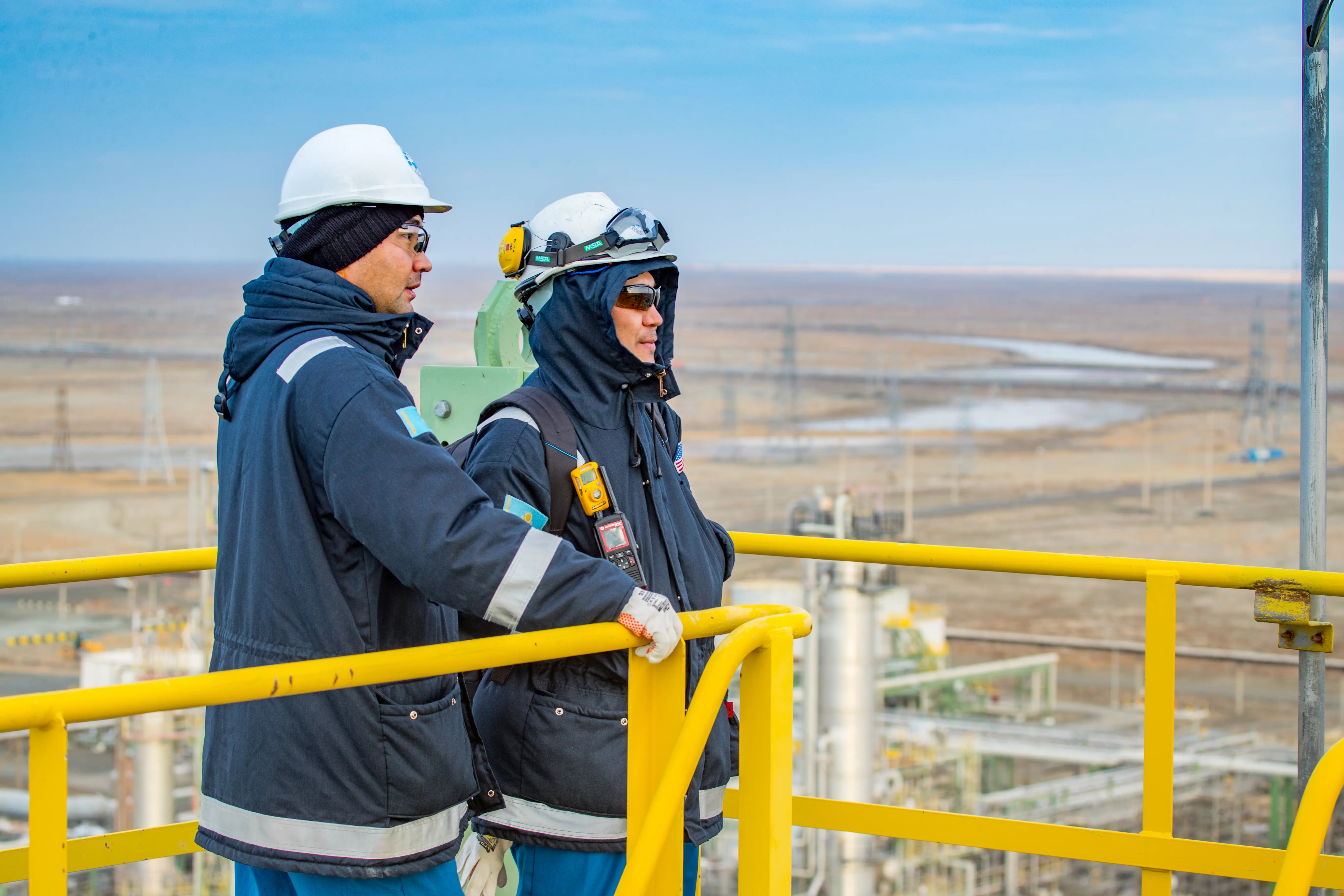
Protecting people and the environment remains TCO’s number one priority. Improving emissions performance is not new to the company and we believe that operating our facilities in a safe and reliable manner as well as improving our operational performance, are key enablers to minimizing our environmental footprint. Since 2000, we have invested over $3 billion in projects to reduce our total emissions. The results have been clear to see. Since 2000 the company has reduced its air emissions intensity by 65% and at the end of 2021, TCO’s total flaring volumes were 59% less compared with 2017 actual flaring volumes.
However, TCO does not rest on these results. More needs to be done and we continually seek opportunities to adapt the way operate to drive emissions reductions.
One of the recent examples includes the TCO initiative that reduced enough stack carbon emissions—meaning those caused by steam boilers—from a processing plant by about 165,000 tons per year. The reduction is enough to power more than 32,000 U.S. homes for a year, according to the U.S. Environmental Protection Agency’s greenhouse gas equivalencies calculator.
Tengizchevroil’s Second-Generation Plant uses two power and steam generators to help process Tengiz production. The units previously operated cold air mode as it was considered the more reliable option, when compared to the more-efficient turbine exhaust gas mode. A TCO team discovered that the plant could operate more reliably and more cost effectively by switching both steam generators to turbine exhaust gas mode.
Engineers spent years testing their theory by conducting numerous risk assessments and comparing improvements in both cold air and turbine gas exhaust generators. During the process, they identified and fixed mechanical issues that previously prevented the turbine gas exhaust mode from being more reliable.
As a result, the Tengiz crew switched to the operational mode of both generators to turbine gas exhaust mode, beginning 2021. Year after, they were able to assess the results of the operating in turbine gas exhaust mode, using less fuel and reducing carbon emissions.
“It is a win-win for greater efficiency and a reduction in carbon footprint,” - said Daniyar Bizhanov, second-generation plant operations superintendent.